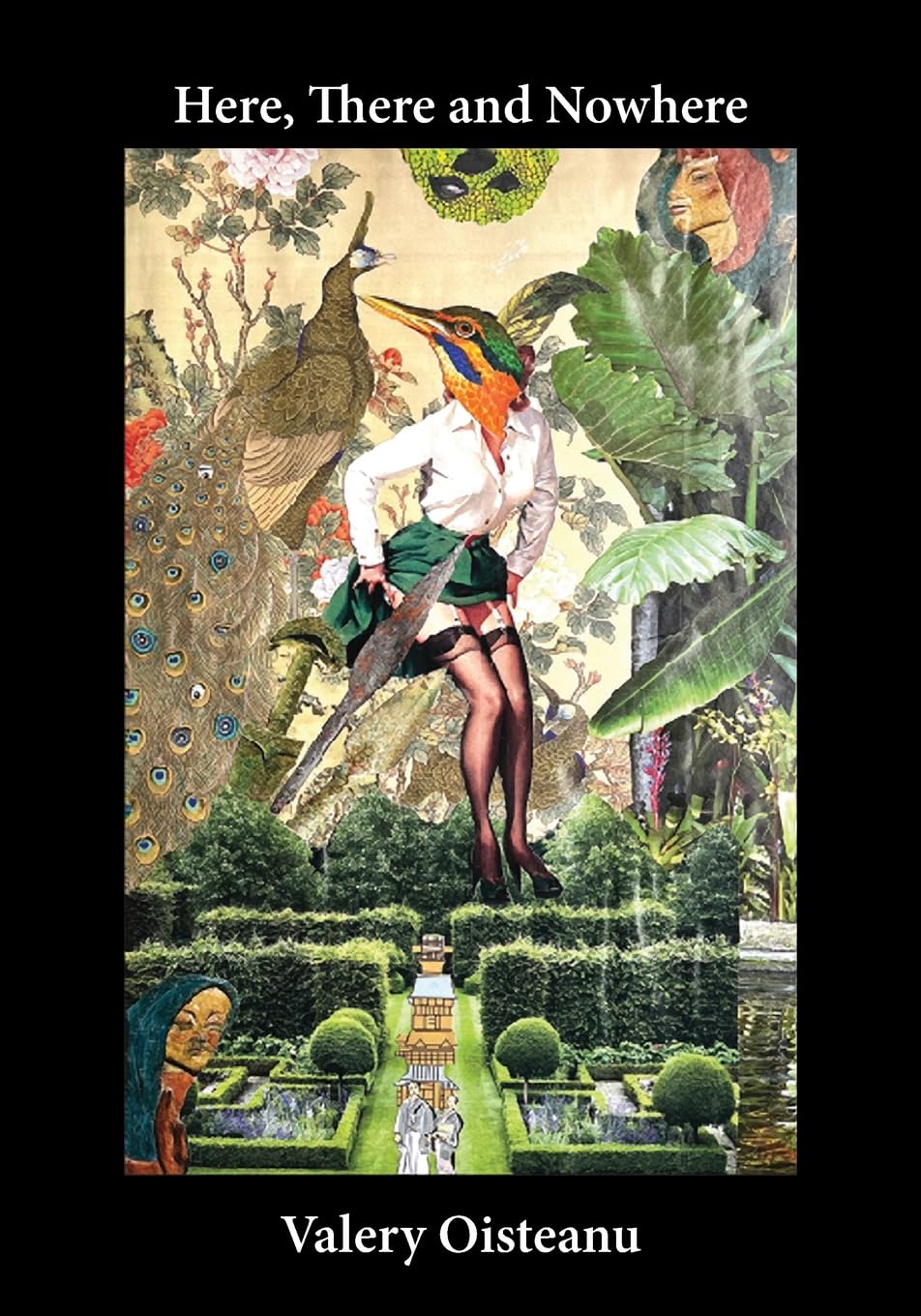Valery Oisteanu
Collages by Ruth Oisteanu
Spuyten Duyvil ($30)
by Bill Wolak
Valery Oisteanu’s Here, There and Nowhere depicts a life savored intensely in the moment—one that risks everything with every single breath. As Oisteanu states in the collection’s foreword, “My poems are spontaneous recollections of traumatic events, fragments of forgotten dreams, nebulous states of mind, illogical episodes and subliminal sequences of ecstasy and redemption.” These poems offer somnambulant marathons into the unconscious, trances that reach out like embraces of moonlight, sporadic erotic wildfires, and of course, a truckload of unabashed surrealistic provocations.
Like César Vallejo, Oisteanu offers a poetry of committed enactment rather than intellectual contemplation. Take “The Revolutionary Cultural Exchange”:
Struggle is a state off mind, awakened consciousness
Defend your rights, resist, persist, walk to the edge of life and death
The military invaders will hang themselves with tools of suppression
Freedom continues to grow in the harshest terrain
As clenched fists and open brave hearts march on
Clearly, Oisteanu isn’t waiting around for either the revolution or the apocalypse. He advocates a more active approach, as he states in “We March”:
We march and we march some more
. . . . . . . . . . . . . . . . . . . . . . . . . . . . . . . . . . . .
We march for the end of wars and for better human rights
We march in the polluted streets and demand clean water
. . . . . . . . . . . . . . . . . . . . . . . . . . . . . . . . . . . .
And we march for the women trafficked abroad
And for the workers dying at work
We march in our sleep
We march all night
We march ’til we die.
Extending his vision to all corners of the globe, Oisteanu’s poems about the war in Ukraine are exceptionally moving, and his “Navalny Blues” is simply heartbreaking. But just as he protests the current state of contemptible affairs, Oisteanu is also hopeful about the future. Love is where he grounds that hope, and in fact, Here, There and Nowhere is dedicated to his fifty-year relationship with his wife Ruth (who provides twelve color collages). “My Wife Ruth” contains extraordinary descriptions—“Her breasts move counter-clockwise to each other / . . . / Her hands create the secret greenhouse / Her songs make the flowers sway and shiver”—and praise of erotic love permeates the book:
Sweat on sweat, the lovely lover chanting improvisations;
these love chants remain suspended in the air.
No one is giving up their fantasies,
no one records their salty dreams.
There is always something stunning, surprising, or enigmatic in an Oisteanu poem. Sometimes it’s a startling title (“Landscape of Unfinished Dream,” “The Subway in the Sky,” “Rent My Shadow”); sometimes it’s an astonishing first line (“This is a poem inside a poem”; “Welcome to the end of the mind”; “No more sleeping on the roof of imagination”). As a surrealist, he is no stranger to the marvelous, and his poems abound in striking linguistic transformations. Consider what he does with the image of trees in “The Peace Enigma of Stillness”:
Herds of trees in the distance
Wailing below a dark undertow
Some fall toward the empty sky
Burning with the speed of an invasion
How hard they try to become birds
Perhaps Oisteanu himself best describes what his poetry aims for in “Madness Unlocked”:
We revolutionize clouds from within,
we purge ourselves of sentimentalism,
of avant-clones, of bourgeois culture.
No more brainwash of hip academia
back to the roots of blues and jazz.
What else, after all, should poetry do in the face of disasters of the changing climate, horrors of ever-widening wars, and the stubborn persistence of worldwide pandemics, but “save the holy madness of Life”?
Rain Taxi Online Edition Winter 2024-2025 | © Rain Taxi, Inc. 2025

